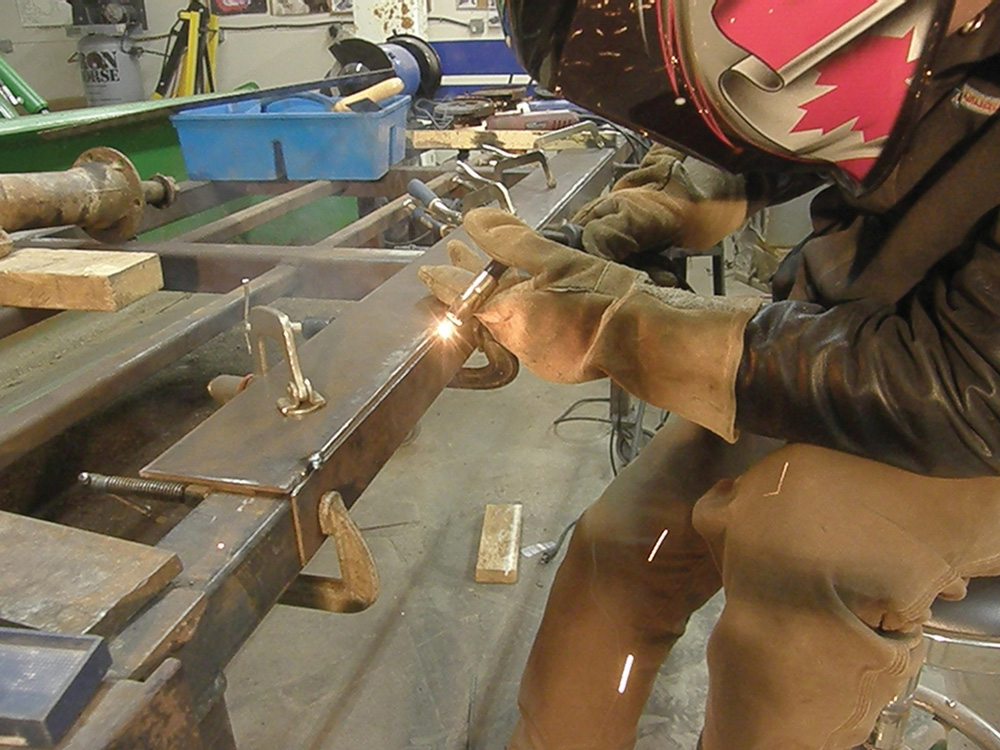Are you thinking about buying a new welder for the farm shop? If so, there’s a lot out there to choose from. Do you need an arc, MIG or TIG type to handle typical repairs and on-farm workshop projects? It’s likely an average farm will need all three at one time or another. The good news is it’s actually possible to get all three in one multi-process machine. Aside from having exactly the right machine to weld different metals under a variety of conditions, having one multi-process machine eliminates the need to buy three single-process welders—and the extra cost.
Read Also

Claas brings 1000 Series SP forage harvesters to Canada
In mid-August, Claas unveiled its new line of Jaguar forage harvesters at an event in Visalia, California, deep in the heart of that state’s dairy region.
Grainews recently met with Don Duncan from Miller Electric to see what that brand offers in a multi-process welder that would be suitable for the average farm shop. He brought along a Multimatic 220 AC/DC model for us to look at. And he thinks that particular multi-process welder would be an ideal fit for the average farm shop.
VIDEO: Watch Don Duncan explain more of the features of the Multimatic 220 AC/DC.
“If you were in the shop and had some material that was very rusty, you’d probably use the stick (arc) process,” he explained. “But generally speaking, the MIG process is much easier to use, and you’ll end up with better penetrating welds. On the TIG process, using DC (current), with stainless and (mild) steel, you’d use it if you were working on thinner material you couldn’t get low enough MIG parameters to work on.”
Many multi-process welders include only a DC TIG function, but that limits the types of base metals they can be used on with the TIG setting. The Multimatic 220 AC/DC, as its name implies, offers both DC and AC TIG. That really expands its use.
“This machine is a little bit unique,” said Duncan of the Multimatic 220 AC/DC model. And the reason is because of that AC TIG function. That means it can be used to weld aluminum, which welders that only offer DC TIG cannot do in the TIG function.
The Multimatic 220 AC/DC model also includes the “auto set” feature available on many of Miller’s welders, which can be especially useful for non-professional welders. It helps to get the machine set up properly.
“What auto set does is, you just punch in your metal thickness and filler metal (electrode) diameter and that will set the machine for you,” Duncan said. “So one thing you know for sure is my parameters are set correctly, and I just need to work on my technique. At least I know my machine is set properly.”
Looking at the front of the welder, Duncan explains the control and information arrangement on it.
“Starting on the left, the processes are all listed,” he said, scrolling through the available functions which cause the image on the small screen to change.
The welder can be set to select any standard size electrode or MIG wire diameter and base metal thickness. From there, the welder automatically sets voltage and amperage, and wire speed for the MIG function.
On the MIG setting, the 220 will handle flux core wire, mixed 75-25 or straight CO2 shielding gasses. And two different gas cylinders can be connected to the welder at the same time. The machine will automatically select the correct one for the process being used. That allows the welder to seamlessly switch between functions simply by pressing the trigger on the MIG gun or pressing the foot pedal for TIG use. The 220 remembers the last setting selected for each process.
“You can also set the MIG function to aluminum with a spool gun,” Duncan added.
If an operator wants, the auto set can be turned off and welding parameters set manually, but the auto setting can be fine-tuned manually as well. And the 220 can be connected to either 110- or 220-volt electrical outlets. The lower voltage connection, however, will limit its output.















